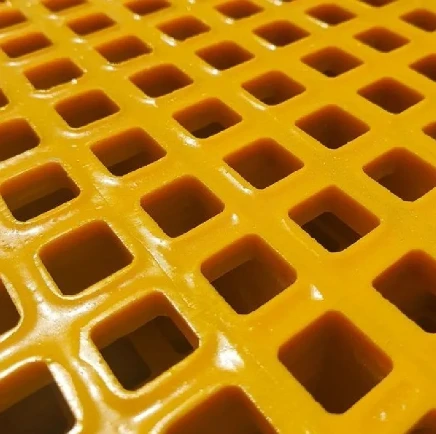loading...
- No. 9, Xingyuan South Street, Dongwaihuan Road, Zaoqiang County, Hengshui, Hebei, China
- admin@zjcomposites.com
- +86 15097380338
- Welcome to visit our website!
frp mini mesh
Exploring the FRP Mini Mesh A Versatile Solution for Modern Applications
In today’s fast-paced industrial landscape, innovative materials are consistently emerging to meet the diverse needs of various sectors. One such noteworthy advancement is the FRP mini mesh, which has garnered attention for its unique properties and versatile applications. FRP, or Fiber Reinforced Plastic, combines the strength of fibers with the durability of polymers, making it an ideal solution for a multitude of uses.
What is FRP Mini Mesh?
FRP mini mesh is a type of composite material that consists of a network of fine fibers, primarily glass or carbon, embedded in a polymer matrix. This structure forms a mesh-like pattern that enhances its mechanical properties. The mini aspect refers to the smaller grid size compared to standard FRP mesh, resulting in increased flexibility and enhanced suitability for finer applications.
Key Properties of FRP Mini Mesh
The FRP mini mesh boasts several properties that make it particularly appealing
1. High Strength-to-Weight Ratio One of its most remarkable attributes is its strength relative to its weight. This characteristic allows for lighter designs in construction and manufacturing without compromising durability.
2. Corrosion Resistance Unlike traditional metals, FRP materials do not rust. This resistance to environmental degradation makes FRP mini mesh suitable for harsh conditions, including exposure to chemicals and moisture.
3. Ease of Installation The lightweight nature of FRP mini mesh simplifies handling and installation processes. This efficiency can lead to reduced labor costs and shorter project timelines.
frp mini mesh

4. Electrical Insulation FRP mini mesh is non-conductive, making it an excellent choice for applications that require electrical insulation. This property is particularly beneficial in the electrical and telecommunications sectors.
Applications of FRP Mini Mesh
The versatility of FRP mini mesh allows it to be employed in a variety of industries, including
- Construction In the construction industry, FRP mini mesh is used for reinforcing concrete structures, providing additional strength while reducing weight. Its anti-corrosive nature is especially advantageous in marine environments or areas where salt exposure is common.
- Transportation The automotive and aerospace sectors utilize FRP mini mesh for lightweight structural components. By integrating this material, manufacturers can enhance fuel efficiency while maintaining safety standards.
- Telecommunications FRP mini mesh is used to create structural supports for antennas and towers. Its non-conductive properties ensure that it does not interfere with signal transmission, making it an ideal choice for these applications.
- Agriculture In agricultural settings, FRP mini mesh can be found in greenhouses and irrigation systems where its moisture resistance and durability extend the lifespan of installations.
Conclusion
The FRP mini mesh exemplifies how advanced materials can meet the evolving needs of various industries. With its impressive properties such as strength, corrosion resistance, and electrical insulation, it is no wonder that FRP mini mesh is quickly becoming a go-to solution for many modern applications. As research and development continue to explore the full potential of FRP materials, we can expect to see even broader applications and innovations in the near future. Ultimately, the adoption of FRP mini mesh signifies a progressive step toward more efficient and resilient solutions across multiple domains, reflecting the spirit of modern engineering and sustainable practices.
-
GRP Structures: The Future of Lightweight, High-Performance EngineeringNewsJun.20,2025
-
FRP Water Tank: High-Performance Storage for Corrosive and Clean Water SystemsNewsJun.20,2025
-
FRP Square Tube: The New Industry Standard for Chemical and Structural ApplicationsNewsJun.20,2025
-
FRP Pultruded Profiles: The Ultimate Choice for Lightweight Structural StrengthNewsJun.20,2025
-
FRP Handrails: The Safer, Smarter, and Stronger Choice for Modern InfrastructureNewsJun.20,2025
-
FRP Grating: The Smart Solution for Durable, Lightweight Industrial FlooringNewsJun.20,2025
-
Why Choose a Galvanized Water Tank for Your Storage NeedsNewsMay.21,2025
